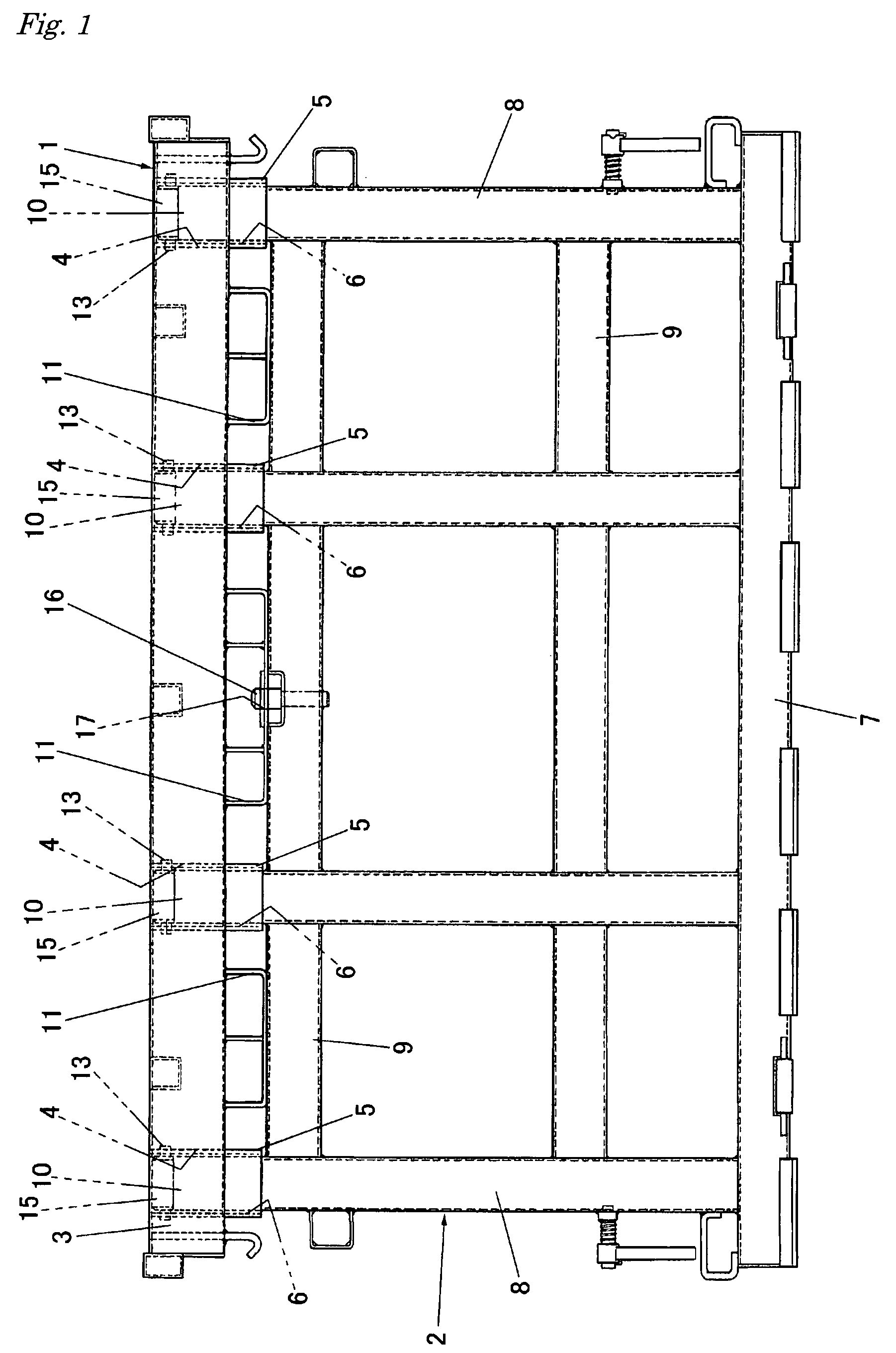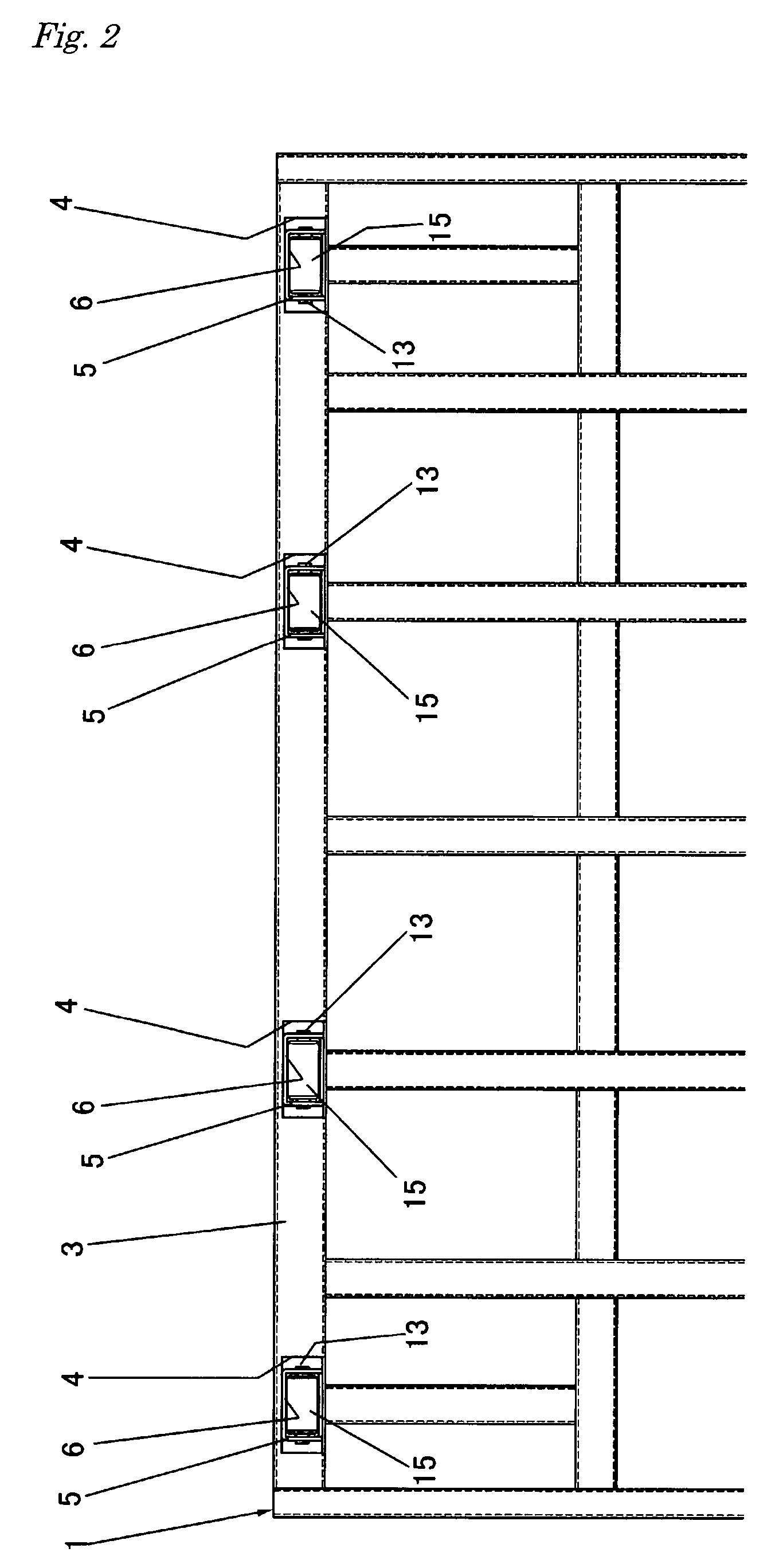Loading rack
a technology of loading racks and racks, applied in the field of loading racks, to achieve the effects of reducing the rattling of the leg in a standing position, stable state, and reducing the error of fittings
- Summary
- Abstract
- Description
- Claims
- Application Information
AI Technical Summary
Benefits of technology
Problems solved by technology
Method used
Image
Examples
Embodiment Construction
[0027]With reference to the attached drawings, the present invention will hereinafter be described by way of an embodiment thereof. However, a structure of a hinge part, which is a feature of this invention, is focused on because the basic composition and advantages of the loading rack are otherwise the same as in the prior art.
[0028]FIGS. 1 to 6 illustrate a loading rack of the present invention. The loading rack has a table body 1, which has an oblong shape in plan view and is formed in a manner wherein square-shaped pipe components are assembled in a lattice pattern, and a pair of legs 2, are foldably attached, one each, to anterior / front and posterior / rear side parts of the table body 1. The leg 2 is capable of being placed in a vertical orientation (being able to be set up) or foldable in a state wherein the bottom surface of the table body 1 is raised by the fork of a forklift car. The state wherein the leg 2 is set up is referred as a “standing position” in the embodiment.
[00...
PUM
 Login to View More
Login to View More Abstract
Description
Claims
Application Information
 Login to View More
Login to View More - R&D
- Intellectual Property
- Life Sciences
- Materials
- Tech Scout
- Unparalleled Data Quality
- Higher Quality Content
- 60% Fewer Hallucinations
Browse by: Latest US Patents, China's latest patents, Technical Efficacy Thesaurus, Application Domain, Technology Topic, Popular Technical Reports.
© 2025 PatSnap. All rights reserved.Legal|Privacy policy|Modern Slavery Act Transparency Statement|Sitemap|About US| Contact US: help@patsnap.com



